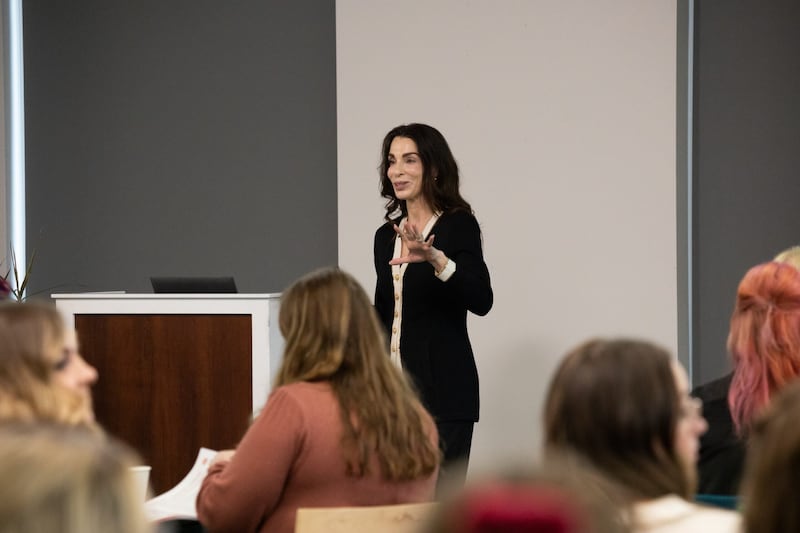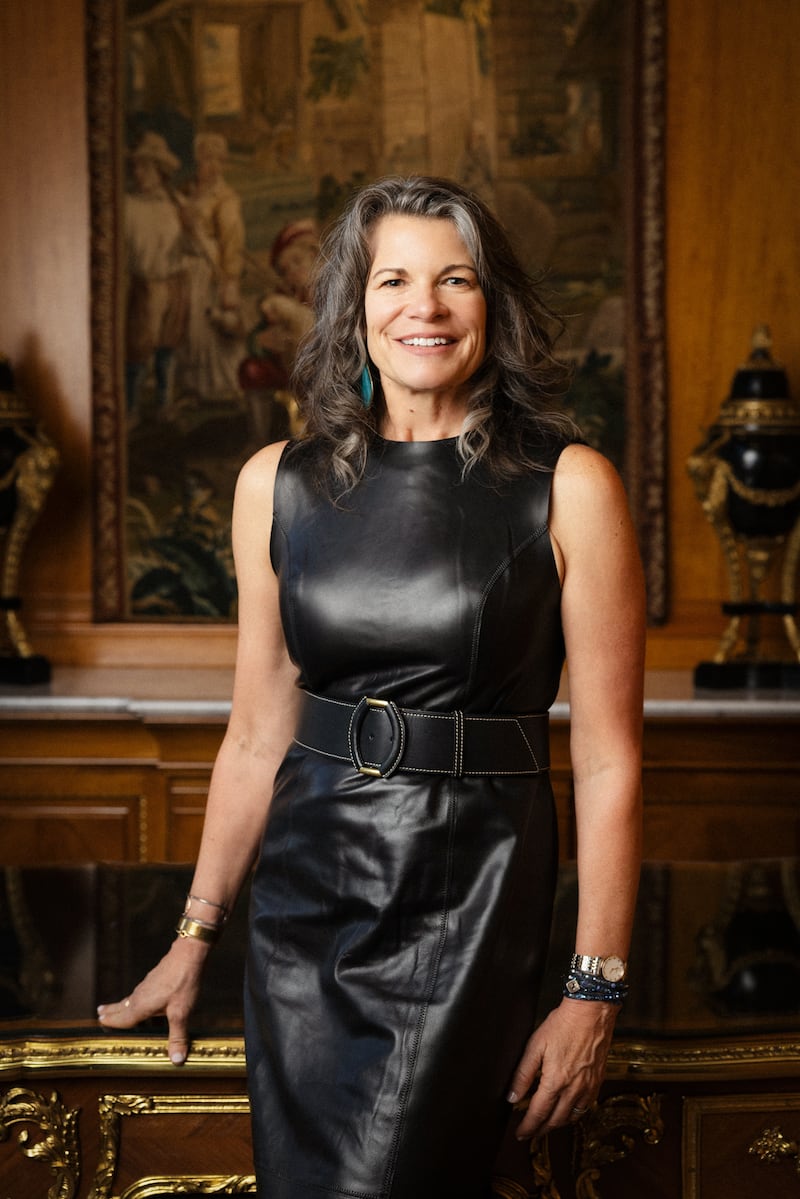Steve Carlile | Photo by Chris Lindsay
This article features hand-picked strategy experts who will present at Utah Business Forward. With five distinct tracks covering entrepreneurship, international business, marketing, people & culture and strategy, this dynamic event will be hosted on November 16, 2023, at the Grand America Hotel in Salt Lake City. Click here to learn more about the event.
Some of the most important lessons in business are learned through failure, as Steve Carlile learned at a key moment in his career.
Carlile was working as a marketing executive at a large, multinational consumer products company when he was tasked with leading the process of developing a plan for getting the entire enterprise better aligned and working as a single team. This was a plum assignment because it entailed extensive engagement with company leadership at the highest levels.
After many weeks and many more meetings, Carlile was off to a great start.
“We were aligned as a group, and the CEO was fully bought into it,” Carlile recalls. “But we didn’t have the right stakeholders in the room during the strategy’s development. As a result, moving into the implementation stage, we ran into friction all over the place, mostly by people who had been consulted along the way but never felt like they were a part of it and lacked the holistic view.”
In the end, that group of leaders—the ones who knew just enough about the process to feel left out of it—began poking holes in Carlile’s hard work, leading to second-guessing by the CEO and the eventual disintegration of the plan.
A few years later, Carlile got another chance. He was not about to make the same mistake.
“When I tried again, I was adamant that we give more leaders—especially leaders over different geographies—a seat at the table. I made sure everybody was crystal clear on the value of what we were working to achieve as a brand,” Carlile says. “Looking back, our plan in the first example was the stronger of the two, but the second was much more successful because it had buy-in. If you don’t have that buy-in and alignment, things will inevitably unravel somewhere along the line.”
Assemble the right team
While achieving buy-in is a foundational challenge, Carlile says it’s one of several that must be successfully managed if an organization is to develop an effective holistic corporate strategy. The first step is assembling the right team, ideally with whomever is responsible for delivering on the company’s core value proposition at the helm. With their deep knowledge of buyer personas and access to analytics, that’s usually the head of customer experience (CX).
At DIME Beauty, that person is Director of Retention Alejandra Salomon, who describes her level of interest in skincare, brand strategy and persona-driven market segmentation as “obsessive.”
“CX is definitely the right place to start when building a holistic strategy because every department touches it. If I’m on a sinking boat, we all are,” Salomon says.
To Salomon, the primacy of buy-in goes beyond how the organization receives the holistic strategizing process and eventual output. She feels buy-in must begin with the brand itself.
“If you’re truly bought into the brand, you’re naturally going to want to buy into the mission and do whatever is needed to grow it. So, the main focus needs to be defining the brand voice and mission,” Salomon says.
Having devised a plan for optimizing the brand identity and customer journey, the next step is to zoom out.
“You have to understand the broader marketplace you’re operating in,” Carlile says. “That requires answering the question, ‘Where else can [our customers] go?’ And that’s where competitive and macro intelligence come in.”
Gather macro and competitive intelligence
Joana McKenna has made a career leading companies in the notoriously dynamic e-commerce sector. She says an accurate understanding of external factors influencing the market is vital.
“Taking the holistic approach to business strategy requires understanding the impact of what’s happening out in the world at a macro level and how those factors are affecting the company’s employees, initiatives and especially customers. That means analyzing economic, political, social and technological factors because they all matter,” McKenna says. “Then you layer competitive intelligence on, which allows leaders to better understand what obstacles other teams are up against and even come up with creative solutions when they otherwise might never have the opportunity. Giving every business leader a voice in this process creates that feeling of buy-in and gets everybody looking at the business holistically.”

Joana McKenna | Photo courtesy of Brooke Lenzen
Having agreed on the need to gather macro and competitive intelligence, the next question is whether to assign internal resources or hire it out.
“It’s a good idea to think about engaging with an external company to do the work in order to get a more unbiased review and analysis,” McKenna says. “And if you’re going to do the work internally, I would look at people who have spent time at McKinsey, Bain or Forrester, learning intelligence gathering and analysis.”
Carlile finds value in both internally- and externally-gathered intelligence, as long as both are capable of achieving the same level of granularity—with one important caveat.
“The more granular the insights you get, the better, but only as long as they relate directly to your core value proposition. To know the difference, think about where you must be best-in-class versus areas where you only need to be as good as the competition or maybe even not as good,” Carlile explains.
Do a SWOT analysis
Having a thorough understanding of the customer journey, core value proposition and the broader environment in which they exist, the next step is to look inward in search of a deep understanding of the organization itself and its capacity to deliver on the brand promise. The classic approach to this is the SWOT analysis: listing the organization’s strengths, weaknesses, opportunities and threats. The latter two of these will have been examined through the macro and competitive intelligence analysis process, while insights into the former two depend on timely access to accurate data generated from within.
“If you’re looking to have an aggressive, radical strategy that’s really going to transform the business, you have to account for so many things internally. You quantify those strengths and weaknesses according to the organization’s internal numbers, dynamics, capabilities, skillsets, ability to execute, change management and even culture,” Carlile says, adding that these metrics are vital to not only the strategy’s development but also its ongoing success.
Wendy Steinle, CMO at Domo, agrees.
“Human gut sense is a powerful force, but in business strategy, the bridge that gets us from intuition to transformative ‘aha’ is data,” she says.
Make data visible to the entire organization
Steinle adds that when it comes to successfully implementing a holistic corporate strategy, keeping data highly visible is key to achieving vital, ongoing top-to-bottom buy-in.
“It’s human nature to want to make an impact and be recognized for it. What holds a lot of people back from feeling and acting like a true owner of their portion of a business is a lack of visibility to the data showing the impact their actions make,” Steinle says. “When a company makes that data visible to people deep into the organization, it changes the trajectory of the business.”
To get there, department heads adapt the plan’s newly defined corporate targets and priorities to their own area of focus and determine the metrics most reflective of their performance.
“You need to be able to capture and integrate the data across systems and have solutioning that allows you to work with it flexibly. Then you give access to everyone so that everyone feels ownership for the outcome,” Steinle says. “When you have teams all looking at purpose-built dashboards with the right metrics, you have a shared conversation which leads to alignment. Companies see their best results when teams are working together toward the same goal under the same strategy and plan.”

Wendy Steinle | Photo by Ori Media
Transparency increases buy-in
As Carlile learned on his first attempt at developing a transformational holistic corporate strategy, the best-laid plans can fall apart at the implementation stage. The moment of truth comes when presenting the product of the planning process to the teams that likely weren’t involved in it but whose alignment is required for success. He recommends plans spanning five years broken down by quarter, organized by function or geography, with the first year presented as a detailed roadmap.
Boiling all that work down to a practical, executable roadmap that will inspire buy-in is the specialty of strategic advisor Heather Erickson. She counsels clients to strategically run ideas by influential employees with thorough knowledge of operations during the strategy planning process. Doing so accomplishes two important things, she says.
“These people then feel like they’re in the know and have a connection to the process, so when it comes out, they get to say, ‘I talked to the executive team about it, and here are the reasons this is a great idea.’ But it also gives them a chance to weigh-in and provide some thoughts before the idea is fully baked,” says Erickson, who notes that unintended consequences—which typically carry unanticipated price tags—of seemingly great ideas often come to light by running them by those with the right perspective.
Before presenting the final plan to the full company, Erickson suggests executives first meet with their departments in order to share the five-year goals.
“It’s brilliant because the executives build out the five-year plan and then go and sit down with every department individually and say, ‘How are we specifically going to help the organization meet these goals?’ Then, each of those plans goes back to the executive team and is shared as a group. Suddenly, you have a very strong strategy with every department feeding in their contribution to accomplishing those goals together,” Erickson says. “Now everybody has buy-in because, when you have that all-hands meeting to present the strategy, every person in that room sees their part of it. They understand they also have a part in helping to ensure the future success of the business.”
As far as the actual form the plan should take, Erickson prefers a pithy document that’s easy to share and refer to.
“It can’t just be a 10-point plan. It has to be simple, memorable and something anyone could rattle off after hearing it just a few times. It can’t be complicated,” Erickson says.
Carlile prefers presenting strategic plans to employees in a more interactive way.
“My team creates a website dedicated to sharing the vision with the employees, and we present it to them at the big meeting. It includes videos from the executives talking about why it’s important. We make it interactive so they can click a world map and see what’s going on in other markets. There’s also a rundown of the competitive and macro intelligence that went into making the plan and a very high-level roadmap that lets them see where we are and where we’re going. They can access it any time,” Carlile says.
Be prepared to pivot
Over several years, the circumstances in which a business operates may evolve enough to render invalid the macro, competitive and even internal intelligence that informed the plan’s creation. In order to remain relevant, a mechanism must be built into the plan that allows for its own evolution. These usually take the form of quarterly check-ins and more involved annual re-examinations to produce each year’s detailed roadmap. However, those timelines—and even the timeframe of the original plan—can vary depending on the realities of the market.
“It’s really important for businesses to understand the speed of the industry they operate in, what that means for the timeframe they need to be building out a strategy for, and the cadence they need to have in place for following through and monitoring progress,” Carlile says. “A critical component of roadmapping is the governance that determines how we’re going to check-in and see where we need to make adjustments. In every business, the hardest thing is deciding when to stay the course with the plan versus when to tweak it versus when to accept it’s not working, and we need to pivot and try something else. You should decide when to ask those hard questions ahead of time, as opposed to when you get there and are facing them head-on.”

